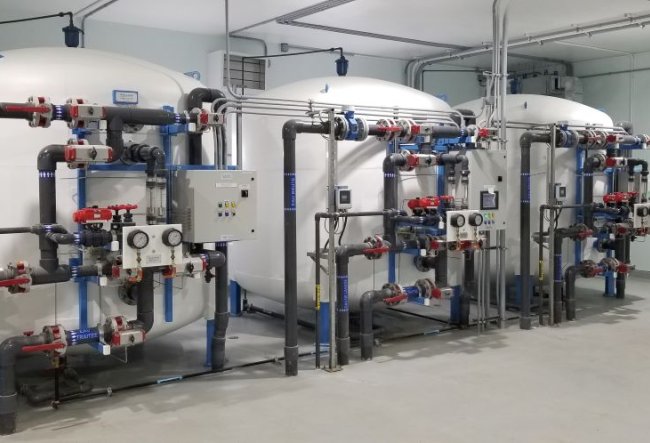Anion exchange resin systems
What is an anion exchange resin system?
An anion exchange unit is a pressure tank containing a bed of anion exchange resin selected based on the type of contaminant to be removed.
How do anion exchange resin systems work?
Anion exchange resin systems work by separating ions (anions) based on their affinity for the resin material. In an ion exchange process, the resin beads must be regenerated using a concentrated salt solution or other solution depending on the type of anion exchange resin. How often the beads need to be regenerated depends on the levels of contaminants in the water.
This type of system requires various add-ons to work properly:
- A control unit or control panel
- A brine saturator complete with pump or injection system for resin regeneration
- A flowmeter or water meter
Why use an anion exchange resin system?
Anion exchange units are used to rid water of unwanted particles such as:
- Total organic carbon (TOC)
- Nitrates
- Uranium
- Arsenic
- Other specific contaminants
Total organic carbon (TOC) provides a medium for the formation of haloacetic acids (HAAs) and trihalomethanes (THMs) in water during the chlorination process. Anion exchange resin systems are one possible option to reduce TOC and, in so doing, lower the levels of HAAs and THMs.
Our Promise
Magnor manufactures custom-built anion exchange resin systems specifically designed to meet your drinking water and process water needs. In addition to providing you with support at the design stage and delivering factory-assembled turnkey equipment, we also offer preventive and emergency maintenance services to ensure your systems are operating at their best.
